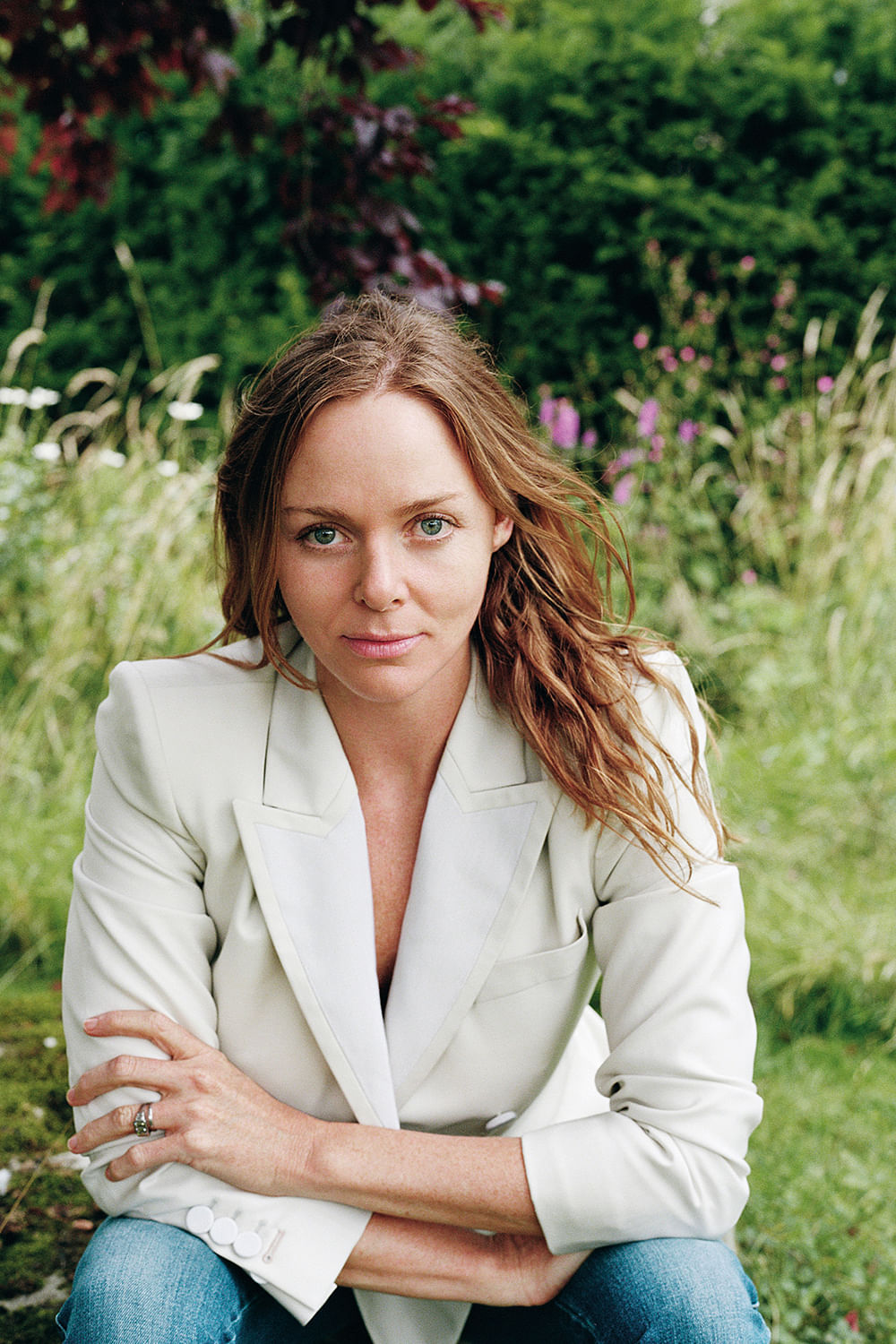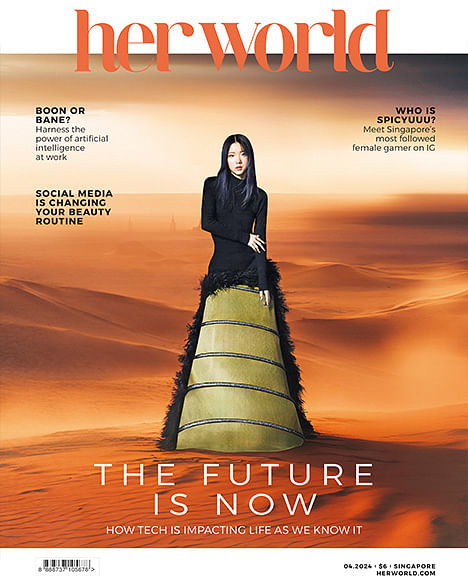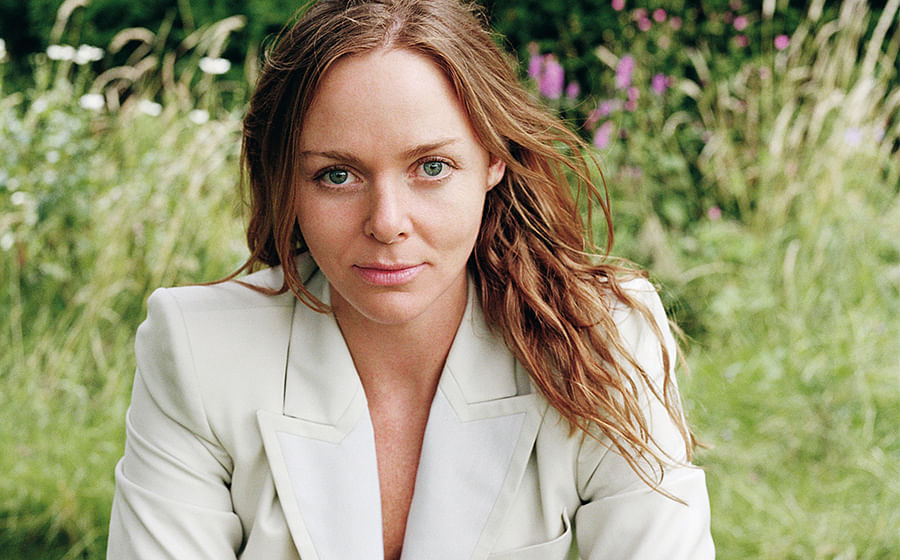Cherisha Revanda Halimcherisharh

Photo: Stella McCartney
If anyone could make a success of the world’s first vegan designer label, it would be Stella McCartney.
A lifelong vegetarian, and born to animal-activist parents, she succeeded Karl Lagerfeld as the creative director of Chloe just two years after graduating from Central Saint Martins at the age of 25. After four years at Chloe, where she reportedly quadrupled sales, she left to launch her eponymous label in 2001 and did what every designer brand didn’t do – she refused to work with any kind of animal-derived skin and fur, and proved that when fashion is eco, it’s even more desirable.
Stella McCartney’s eco efforts have gone beyond not using leather and fur. The designer has found sustainable or vegan alternatives for materials like silk, cashmere, nylon and metals, and is helping to develop even better ones for her brand and the industry.
Vegan silk
To harvest silk, silkworms are boiled alive in their cocoons. That, to McCartney, is unacceptable. In 2017, she partnered with Bolt Threads, a Cali-based biotech company that creates eco-friendly fibres and fabrics using green chemistry practices. One of its products is microsilk, a vegan-friendly silk made of yeast, sugar and water.
Bolt Threads first studied the silk proteins spun by spiders, then developed a similar protein in large quantities through fermentation using genetically modified yeast, sugar and water. The liquid silk protein produced is extracted and spun into fibres the same way acrylic and rayon are made.
Forest-friendly viscose
Viscose, or rayon, is made from cellulose pulp extracted from trees. Since her Spring 2017 collection, McCartney has used only viscose sourced from sustainably managed and certified forests in Sweden.
Every year, more than 120 million trees are logged just for fabric production. The impact of deforestation includes climate change and habitat loss for millions of species. Committed to her company being a zero-deforestation one, McCartney ensures that the raw materials used to make her fabrics have not contributed to the loss of ancient and endangered forests, or to deforestation or forest degradation.
She is also working with Canopy, a non-governmental organisation in the United States, to protect key conservation areas like the Leuser Ecosystem in Sumatra, Indonesia, northern boreal forests, and the rainforests of Canada by ensuring that her suppliers respect the indigenous communities’ rights to give or withhold their free, prior and informed consent before logging takes place.
ALSO READ: GO GREEN WITH THESE FIVE SUSTAINABLE FASHION BRANDS
Faux fur that comes from acrylic, polyester, wool or mohair
Eighty-five per cent of the fur industry’s skins come from animals in fur factory farms, where profits come before animal welfare, and thousands of animals are housed in poor conditions. Also, to preserve and dye the fur, toxic chemicals are used. This harms both the environment and the workers.
McCartney’s faux fur is a cruelty-free, fur-like product made of acrylic, polyester, wool or mohair. She is conscious, however, that her faux fur products are non-biodegradable, and encourages customers to care for them and be responsible by never throwing them away.
Faux leather
Alter-nappa has been the material used for her label’s shoes and bags since 2013. It is made from polyester and polyurethane, with a recycled polyester backing.
Such faux leather alternatives are kinder to the environment. Animal agriculture emits greenhouse gases and takes up land, while tanneries consume large amounts of energy and water. According to environmental profit and loss account calculations, using recycled polyester instead of Brazilian calf leather creates 24 times less of an environmental impact.
While McCartney has reduced her brand’s impact by not using leather, her synthetic alternatives also come with environmental concerns because they involve the processing of oil. So she is now using recycled and bio-based materials, and exploring lab-grown leather to further reduce the environmental impact.
Regenerated cashmere
Of all the raw materials McCartney uses in her production chain, cashmere has the highest environmental impact. Four goats are needed to produce enough fibre for one cashmere sweater, unlike wool, where one sheep can produce enough fibre for up to five sweaters. With more affordable casual cashmere products available now, global demand for the fibre is growing. This has led to an increase in the goat population in Mongolia, which is in turn destroying the grasslands in the country.
Cashmere goats graze voraciously, rip out grass by the roots, and tear the soil crust with their sharp hooves, allowing wind to carry away the topsoil. The fivefold growth in the goat population since the 1990s has led to grassland desertification.
To lessen the impact, McCartney uses Re.verso, a regenerated cashmere yarn made in Italy, instead of virgin cashmere for her knitwear. The former is made from post-factory waste and has 92 per cent less of an environmental impact than virgin cashmere.
She is also working with partners like the Sustainable Fibre Alliance to help to reverse desertification that has taken place.
Organic cotton
Conventional cotton farming has a heavy impact on the environment. It uses nearly $2.6 billion worth of pesticides each year – causing biodiversity loss and harming farmers’ health – and is highly water-intensive. More than 20,000 litres of water are used to produce 1kg of cotton, which can make one T-shirt and one pair
of jeans.
Organic cotton farming cuts the use of toxic chemicals, improving soil health and increasing water conservation. Farmers have better livelihoods because organic products can be priced at a premium, and do not rely on expensive pesticides and fertilisers. The crops are also mostly rain-fed instead of irrigated, increasing water conservation.
Today, 61 per cent of the cotton Stella McCartney uses is certified organic.
ALSO READ: STELLA MCCARTNEY’S NEW STORE AT PARAGON IS STOCKED WITH WHAT YOU LOVE: ECO-FRIENDLY LUXURY PIECES
Metals with a lower environmental footprint
Ten to 15 per cent of the raw material her brand uses is metal, mostly in her Falabella bag chains. These are made of brass, a copper and zinc alloy. The mining of copper causes the non-biodegradable metal to leach into the ground and water sources, killing plants and animals and causing serious health issues for the workers.
McCartney has developed a stainless-steel and aluminium alternative that is now used for some of her chains. She also provides free repair services for all her Falabella bags.
By 2020, Econyl will replace nylon
McCartney is switching the nylon she uses to regenerated nylon. She aims to use only Econyl regenerated nylon by next year. Virgin nylon is made from crude oil (unrefined petroleum), whereas Econyl is made of recycled and regenerated industrial plastic, waste fabric and fishing nets. It has exactly the same quality as virgin nylon and helps to divert waste from oceans and landfills. Every 10,000 tons of Econyl produced instead of virgin nylon saves 70,000 barrels of crude oil.
Recycled polyester for bag linings
Polyester is a synthetic, non-biodegradable fibre made of coal, air, water and petroleum. Since 2012, McCartney has used only polyester made from recycled plastic bottles for her bag linings, and recycled polyester throughout her collections wherever possible.
Currently, most of the world’s recycled polyester comes from recycled plastic bottles. McCartney is seeking and supporting new technologies that enable the fashion industry to deal with its own waste by recycling polyester fabrics back into fabrics.
A garment labelling system to promote caring for the environment
Developed together with H&M and Swiss clothing care-labelling company Ginetex, Clevercare is a garment-labelling system that advocates saving energy and water by recommending washing clothes at lower temperatures; hanging dry as opposed to tumble-drying; ironing only when necessary; and using eco dry cleaners.
Sustainable sportswear
In 2004, Adidas and Stella McCartney began a long-running partnership to design activewear for women. Like McCartney’s own brand, Adidas by Stella McCartney is eco-conscious, uses sustainable materials such as organic cotton and recycled yarn, and makes use of innovations like Adidas’ Drydye technology.
While traditional fabric dyeing needs 25 litres of water to dye a T-shirt, Drydye is a polyester dyeing process that requires no water and uses half the chemicals and energy.
How it works: Using compressed carbon dioxide, dye is injected into the fabric, eliminating the need for water as the dye medium. After the dyeing cycle, the carbon dioxide is gasified so it separates from the dye, which condenses. The clean carbon dioxide is then pumped back into the dyeing vessel to be reused.
Last October, McCartney also designed the first vegan leather Stan Smith.
This story was first published on Her World’s April 2019 issue.
ALSO READ: STELLA MCCARTNEY’S OLYMPICS DESIGNS REVEALED



